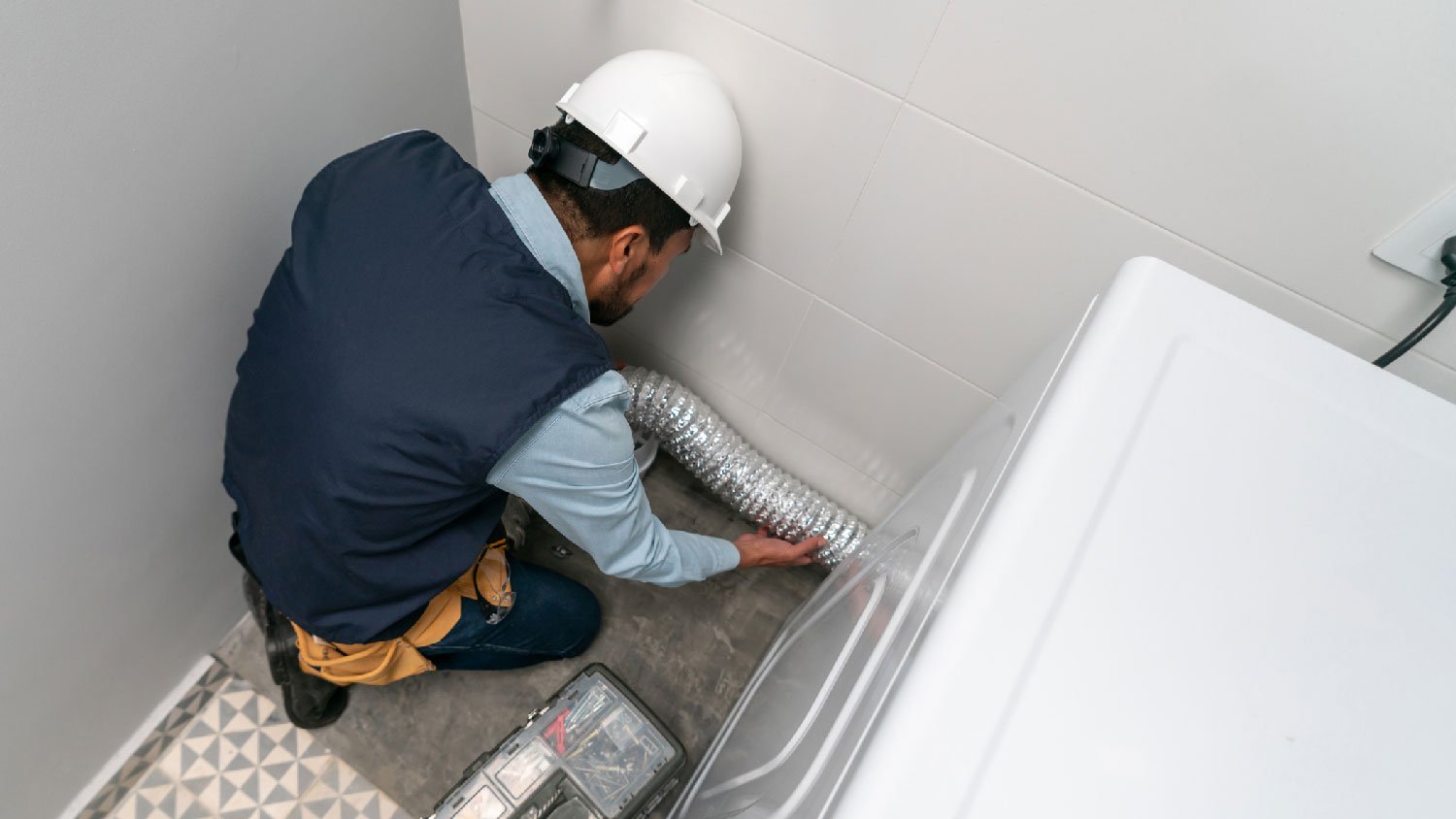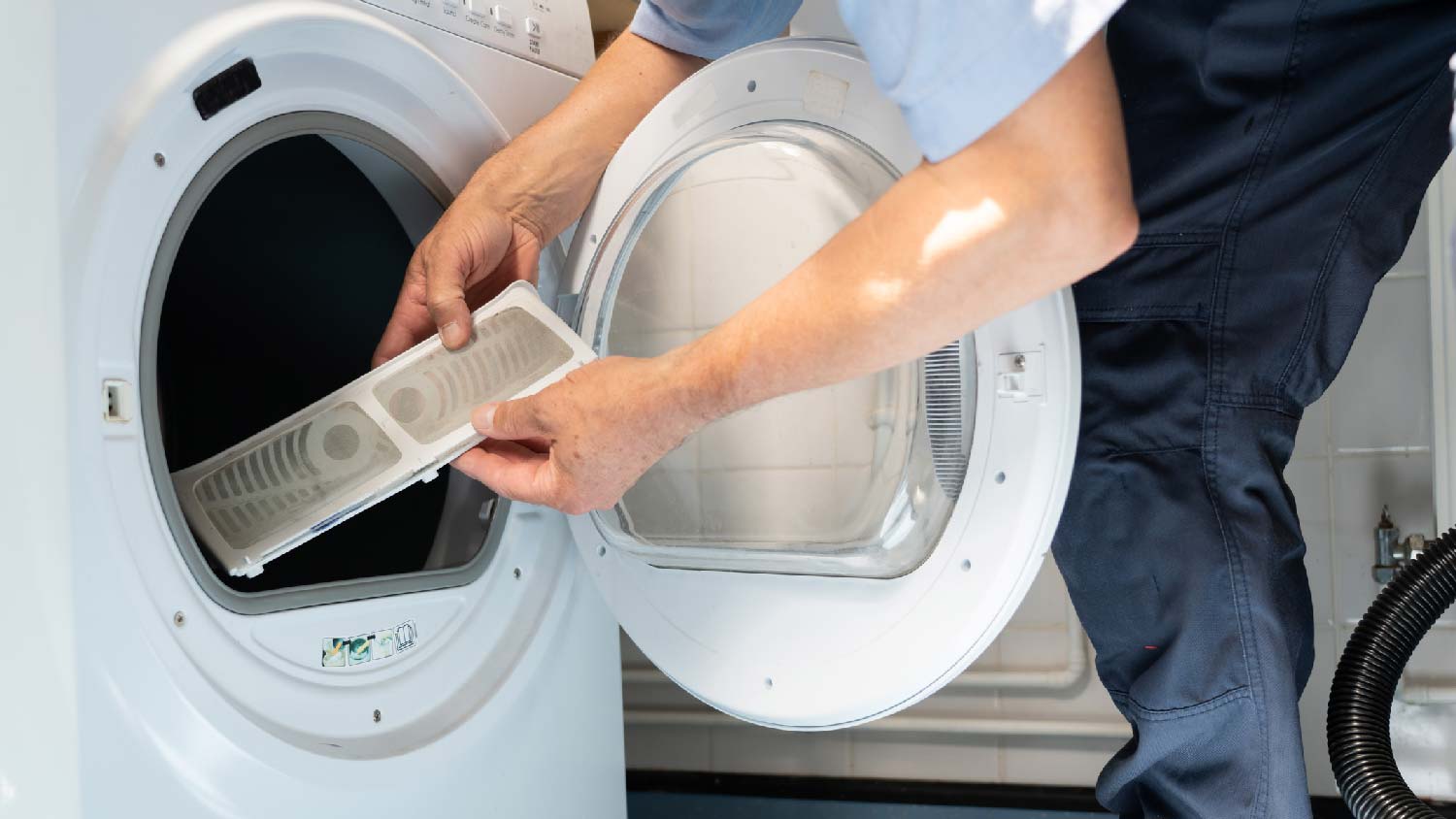
Installing a gas dryer can help you save on your monthly energy bills. Depending on whether you need a new gas line, gas dryer installation costs will vary greatly.
We’re not blowing hot air—there are real differences between the two


Vented dryers are less expensive and can dry larger loads faster.
Ventless dryers are often the only option for apartments.
Vented dryers are much more common in North America.
Both dryers can last several years if cared for correctly.
If you’re choosing between a vented and a ventless dryer, your budget, home layout, and household size are the main factors to consider. It’s safe to say that 90% of the decision is determined by whether you have a dryer vent installed. If you have the hookups for a vented option, you’ll want to choose the suitable dryer for your household size. Those with more people living in the home should go with a vented dryer when they have the option.
The main difference between these two types of dryers is that one requires a vent to outside air, while the other is self-contained. Vented dryers dump heat much faster but also require a dedicated space to operate. The real defining difference, and the main reason homeowners choose one over the other, is whether they already have an exhaust port drilled into their wall. Most apartments don’t, which is why they have ventless dryers.

Ventless dryers are dryers that recycle the hot air instead of expelling it. This sounds good in theory, but the additional energy required costs more than a vented dryer, and they are often more expensive to purchase. However, if you live in an apartment or your home doesn’t have an exhaust vent installed—or you don’t want to install one—they can be an excellent solution.
| Pros | Cons |
|---|---|
| Do not require an exhaust port | Increases humidity |
| More compact | More expensive |
| Quiet operation | Requires more energy to run |
| No duct cleaning required | Longer drying time |
Best for:
Apartments and homes without exhaust vents.
Homes with limited space.
People looking for a quiet dryer.
Those interested in placing their dryer in unconventional spaces.
Avoiding dryer vent installation costs.
The major pro of ventless dryers is that you can place them anywhere, negating the need for an external exhaust vent. Ventless dryers are also much quieter than their vented alternatives because they don’t need to pump the hot air out. Finally, ventless dryers require less maintenance because they don’t require you to remove and clean the duct that connects the dryer to the outside air.
Despite the pros, ventless dryers have their setbacks. They are more expensive than their vented counterparts when you hire a local appliance company to install them. They are more complicated to repair, can require more energy to run, and drying clothes takes a lot longer. Another big issue is that because they can’t expel all the hot air generated from drying clothes, they tend to significantly increase the humidity in the room where they operate. For some, ventless may be the only option, but if you can choose between the two, don’t discount these cons.

In contrast to their ventless counterparts, vented dryers have a tube around 6 inches wide that pushes hot air out of the house entirely. Many houses have exhaust hookups where you can place your dryer. This somewhat limits where you can place it, but since many homes have a dedicated laundry area, it isn’t often a problem. Vented dryers are larger and dry clothes more quickly than ventless dryers, but that doesn’t mean they’re without their faults.
| Pros | Cons |
|---|---|
| Faster drying time | Requires vent installation |
| Less expensive to purchase | Needs more space |
| Requires less maintenance | Limited placement options |
| Larger capacity | Weather affects venting |
| More available options | Increased fire risk |
Best for:
Large households that dry large loads.
Homeowners with ample space.
Those who want to avoid higher upfront costs.
Homeowners who don’t want to deal with increased humidity.
Homes that already have dryer vents installed.
Vented dryers dry more clothes more quickly, but they require a tube to pump out the hot air generated during a drying cycle. Because of this, they are generally larger and louder, but they do a much better job of drying clothes than ventless dryers. They don’t have complicated heat recycling systems, so they require less maintenance, and because they are the more common option, there are more brands and models to choose from.
Vented dryers do have their drawbacks. They require a lot more space than their ventless counterparts, which means you usually can’t stack them atop a washing machine. You are limited to wherever the vent is unless you want to install a new one. If you live in a cold climate, the humidity that is pumped out with the air can freeze, blocking the vent. Finally, if you don’t remove the lint by cleaning the dryer vent, over time it builds up and can be a fire hazard. The cost to clean a dryer vent is $145, on average.

Ventless dryers look sleeker than vented dryers. The lack of vent coming out of the back means the unit is freestanding, so you can also place it anywhere. Since you don’t have to see it if you don’t want to, and it doesn’t have a large pipe sticking out the back, the edge goes to ventless.
Ventless dryers are not as common as vented dryers, but because you can place them anywhere you want, this point does to them. While there are surely more options to purchase vented dryers, it’s not like you are limited to one or two brands if you go ventless. There are still plenty of options—plus you’re more likely to be able to stack it over a washer.
Vented dryers tend to last a good amount of time, but without regular maintenance, they also break down sooner than ventless dryers. Ventless dryers have more moving parts and are slightly more complicated, but they require less oversight. If both machines are cared for, they should last a similar amount of time.
Vented dryers are less expensive to buy and to run. The heat pump that expels hot air through the vent uses less energy than the heat recycling systems found in ventless dryers. While vented dryers are bigger, if you consider the cost-per-pound dried, vented dryers are less expensive both in running costs and upfront payment when you purchase the machine.
Vented dryers are easier to repair because they have less complicated parts, and because they can hold larger loads, they are less frequently overloaded. Overloading a dryer can burn out the motor and wear out the belt prematurely, so the fact that vented dryers somewhat negate this issue gives them the edge here.
Vented dryers require cleaning the lint trap and the tube leading to the outside, while ventless dryers require removing moisture traps and checking the heat recycler. Both types of dryers require some maintenance, so this point results in a tie.
A blocked or dirty dryer vent can pose a fire hazard to your home. When lint accumulates in the vent, the heat from your dryer could cause the lint to combust, triggering a spark that can start a fire. That’s why having your dryer vent professionally cleaned every year is so important.
Vented dryers can last longer than their ventless competitors if they are properly cared for. This means regular maintenance and cleaning, as well as avoiding overloading the unit.
Most people own their dryers until they need replacing, but both have a market and can be resold without much problem. If you live in the suburbs, vented dryers will sell faster. The opposite is true if you live in a city, where you can move a ventless unit without much issue.
Which is better isn’t a simple answer. If you have a vent installed, you can choose between the two, but we lean more toward the vented dryer option. If you live in an apartment without a vent and you can’t install one, you don’t have a choice and will have to settle for ventless.
However, if you can choose between the two, we’d recommend the vented option due to its low upfront cost and significantly larger load capacity.
The receptionist answering the phone (2/17/21) was warm and friendly. The certified appliance technician, Kyle, was professional, fast, courteous, and efficient (and wore a mask, as well as shoe covers, so no Covid concerns or dirty carpet tracks). Thank you!
Still not resolved. 11 days just to get repair service, and then ordered the part, and another 2 weeks before they will finish up. Have already spent over double my monthly bill at the laundry mat.
Went quickly, pro repaired a 2" PVC to copper downstairs. Done in an hour or less. Renter's hadn't reported the small leak, Backlund had been out the week before to camera the main line and auger the upstairs toilet. At that time, the eagle-eyed technician noticed a bucket behind the dryer...
I was pleased with the service. There was no problem scheduling them to come out. The technician was very professional. I’ve been pleased with all of the technicians. However I've had trouble recently with scheduling refrigerator repair.
I have used this company on 2 different projects. Both were single family homes with basements that had major water intrusion issues. The owner, Steve, is very knowledgeable and professional, with a lot of experience in this space despite being a fairly new company. The first project was...
From average costs to expert advice, get all the answers you need to get your job done.

Installing a gas dryer can help you save on your monthly energy bills. Depending on whether you need a new gas line, gas dryer installation costs will vary greatly.

One of the most common fridge problems is a blown compressor motor. Use this guide to determine the cost of replacing the compressor and to estimate the total cost of your repair.

Several factors impact dryer vent installation cost. Use this guide to learn what affects the cost, and how much you should budget for this project.

Did you leave the gas on? If you went out and forgot to turn off the stove, don’t panic. Instead, remain calm and follow a few basic steps.

You have options for disposing of old appliances, like your refrigerator, freezer, washer or dryer. Use this guide to learn what to do with old appliances.

Learning how to determine washer box height in your laundry room will come in handy when you need to access your washer connections.